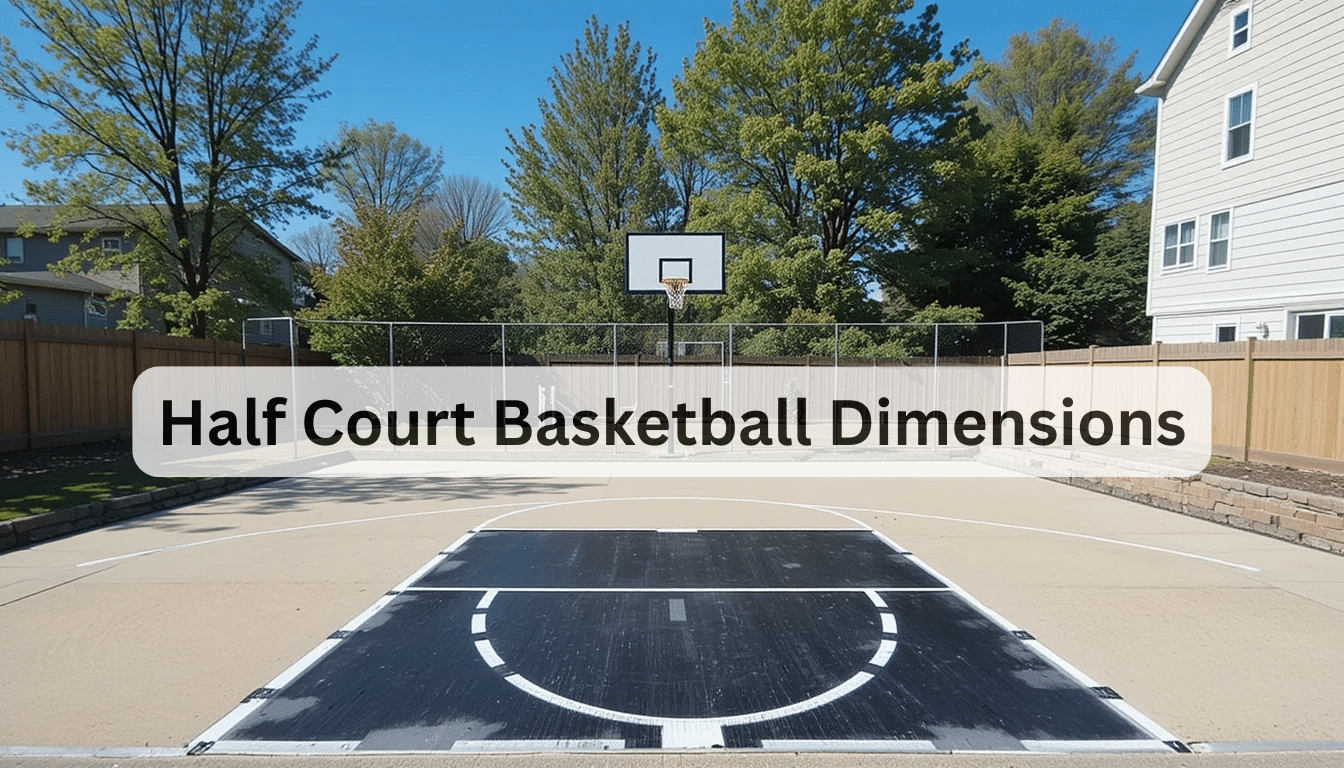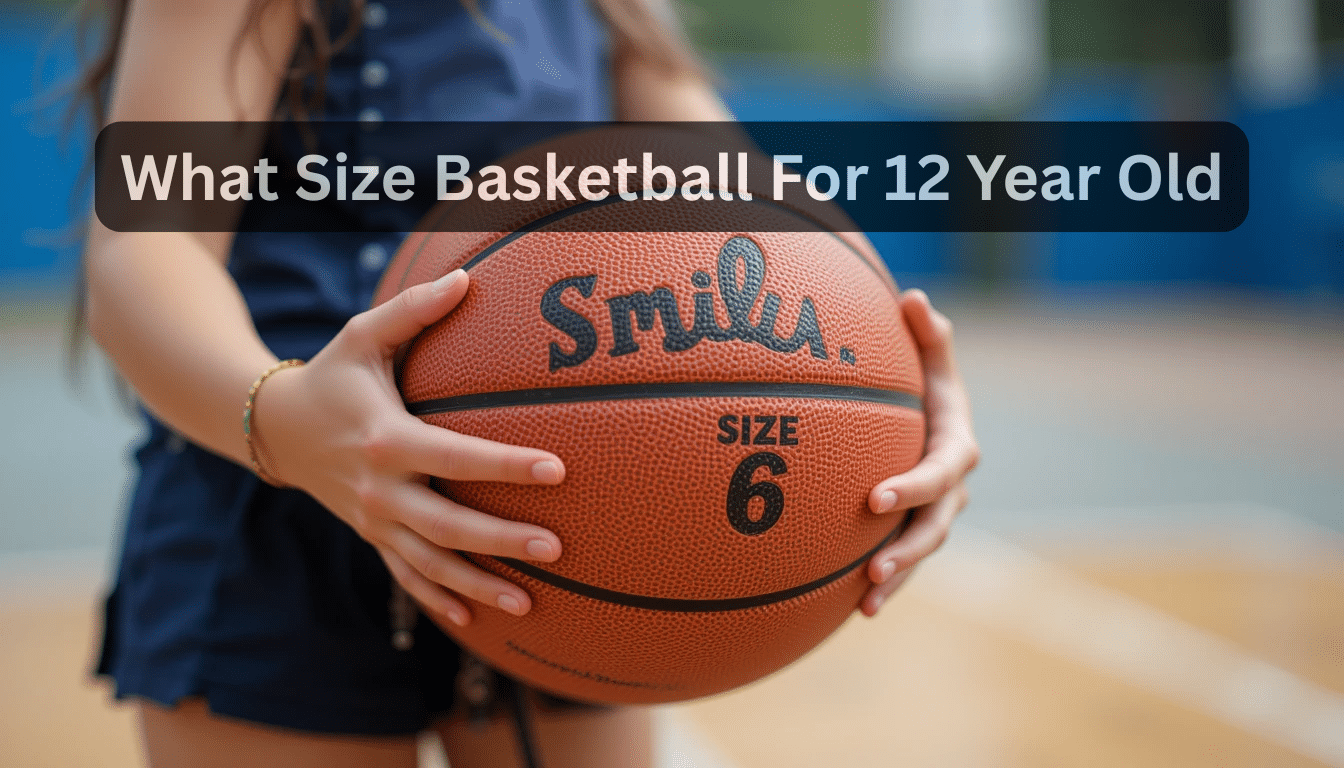Whether you’re setting up a game in your backyard or designing a full-sized court for a high school, understanding the half court basketball dimensions is crucial. Having the right dimensions ensures your games are authentic, safe, and enjoyable. This guide will break down everything you need to know about half court basketball size in feet, meters, and more. If you’re a basketball enthusiast looking to create a dedicated playing space, you’re in the right place!
What Are the Standard Half Court Basketball Dimensions?
When designing a half court basketball area, you need to keep in mind both the width and the length of the court. These dimensions differ depending on the space available and the purpose of the court, such as a home setup or a high school gym.
Half Court Basketball Size in Feet
A standard half-court basketball size in feet is generally about 47 feet long by 42 feet wide. This size allows players to experience realistic gameplay while accommodating the essential areas for dribbling, shooting, and passing.

Half Court Basketball Size in Meters
If you’re working with metric measurements, the half court basketball size in meters would be approximately 14.3 meters long by 12.8 meters wide. This conversion from feet to meters will give you a clear idea if you’re in a region that uses the metric system.
Half Court Basketball Size for High School
For high school basketball, the court size needs to align with specific guidelines for competitive play. The high school basketball court dimensions typically feature a full court that measures about 84 feet by 50 feet, so the half-court basketball size for high school would be roughly 42 feet by 50 feet. This allows for a regulated environment for practices, games, and drills.
Backyard Basketball Court Dimensions
If you’re building a basketball court in your backyard, your available space will determine the backyard basketball court dimensions. Generally, half-court basketball dimensions backyard setups range from 25 feet by 40 feet to 35 feet by 45 feet. These sizes are designed to fit into standard residential properties while still giving you ample space for a quality game.
The Essential Areas of a Half Court Basketball Setup
When laying out your half court, it’s important to factor in the key zones that define the game. Let’s explore the different sections of the court and what to consider when designing them:
The Key (Free-Throw Line Area)
The key area, also known as the paint, is the rectangular section in front of the basket. In half-court basketball, the key typically measures 12 feet wide by 19 feet long. The free-throw line sits 15 feet from the basket. This area is essential for both offensive and defensive plays, including shooting, dribbling, and positioning for rebounds.
The Three-Point Line
For a half court basketball design, you can either opt for a full three-point line or just a simplified version. The NBA three-point line is set at 23.75 feet from the basket at the top of the arc. However, for smaller setups or casual play, you might opt for a closer three-point line, typically around 20 feet from the basket.
The Baseline and Sidelines
The baseline and sidelines outline the outer boundaries of the court. In a half court, the baseline is typically about 15 feet from the hoop, allowing space for players to stand while waiting to inbound the ball. The sidelines will be on the sides of the court and measure the same as the width of the court.
Designing Your Half Court Basketball Setup
Step 1: Select the Right Space
The first step in designing your half-court basketball size backyard court is choosing an appropriate space. You need a flat area that’s large enough to fit the dimensions of the court. A good place to start is by measuring the space and comparing it with standard basketball court dimensions. If you’re working with a tight space, consider scaling down the design, but ensure it remains playable.
Step 2: Choose Your Surface
A well-built court needs a solid foundation. Concrete is a popular choice, especially for backyard basketball court dimensions, due to its durability. If you’re unsure about how much material you’ll need for the surface, a concrete calculator can help estimate how much concrete is necessary based on your court’s size. Once the foundation is set, a good finish, such as painted lines, will add to the court’s functionality.
Step 3: Consider the Hoop Height
In a typical basketball game, the hoop is set at 10 feet from the ground. Ensure that the hoop is installed at this standard height, regardless of whether it’s a half court basketball size high school setup or a smaller backyard court. This allows for an authentic playing experience.
Step 4: Final Touches for Design
Once the basic structure is in place, add finishing touches like the half court basketball design you envision. You might want to add logos, custom colors, or other personal elements to make your court stand out. Be sure to mark out the half-court basketball dimensions pdf that you can print out for reference when painting lines on your court.
Comparing Half Court Basketball Dimensions to Other Courts
While basketball courts have their own specific sizes, it’s interesting to compare them to other types of sports courts. Here’s a quick look at how a half court basketball measures up against other courts:
Tennis Court Dimensions
A standard tennis court measures about 78 feet by 36 feet for doubles play. If you’re working with limited space and wondering if a half-court basketball would fit next to a tennis court, the answer is yes. The tennis court’s length is almost identical to the width of a half-court basketball setup, so you could easily use your backyard for both sports if you manage the layout carefully.
Full Court vs. Half Court
A full-sized basketball court measures around 94 feet by 50 feet, much larger than a half court basketball design. The extra space on a full court allows for full-on games with fast breaks, offensive and defensive strategies, and more players. However, a half court basketball setup can still provide a competitive, fun environment for one-on-one or small group games.
Building a Basketball Court on a Budget
If you’re trying to build a court without breaking the bank, consider the following tips to keep your costs down:

- DIY Setup: If you’re handy with tools, you can build your own hoop and lines rather than purchasing a pre-made court.
- Choosing Inexpensive Materials: Use cheaper, durable materials like asphalt or gravel instead of concrete for a more affordable setup.
- Scale Down the Design: If you don’t have space for a full half court, you can still create a mini-court by adjusting the dimensions of your court to fit your available space.
Common Questions About Half Court Basketball Dimensions
- How much space do I need for a half court basketball setup? For a half-court basketball size backyard setup, you’ll need a minimum of 25 feet by 40 feet. However, more space is always better for a more authentic experience.
- Can I design my half-court basketball on a smaller scale? Yes, you can reduce the dimensions of a half-court if space is limited, but make sure to keep the critical areas, such as the key and three-point line, scaled appropriately.
- What are the most important dimensions for a half-court? The most important measurements include the key area, the free-throw line distance, and the three-point line, ensuring these elements match the size of a full court as closely as possible.
- Is it possible to get a half court basketball dimensions pdf? Yes, many online sources offer printable half-court basketball dimensions PDFs, which you can use as guides when laying out your court.
Frequently Asked Questions
Is 30×30 Big Enough for a Basketball Court?
A 30×30-foot area can accommodate a small backyard basketball court, but it’s a bit tight for full-scale play. While it can work for casual games or practice, it’s smaller than the standard half-court basketball dimensions, which typically measure 42 feet by 47 feet. If you’re looking for a more authentic game experience, you may need more space. For a full half-court setup, aim for at least 35×45 feet or larger, especially for shooting and dribbling room.
What Size is a Small Backyard Basketball Court?
A small backyard basketball court generally ranges between 25 feet by 40 feet and 35 feet by 45 feet. These dimensions offer enough room for basic play, such as shooting and one-on-one games, while fitting within most residential spaces. While it’s smaller than a full-size court, it still provides a fun environment for practicing skills and playing casual games.
How Far is the 3-Point Line from the Hoop?
The 3-point line is typically 23.75 feet from the hoop in the NBA. However, the distance can vary based on the type of court. For high school basketball, the 3-point line is set at 19.9 feet. If you’re building a half-court basketball setup in your backyard, you can adjust the line to your preference, but keeping it at 19.9 feet will align it with standard high school basketball court dimensions for a more realistic playing experience.
How Much Does it Cost to Build a Half-Court Basketball Court in Your Backyard?
Building a half-court basketball court in your backyard can cost anywhere from $3,000 to $10,000 or more, depending on several factors. These include materials (like concrete or asphalt), surface preparation, hoop installation, and any additional features like lighting or custom paint. If you’re aiming for a high-quality setup with durable materials, expect the price to be on the higher end. Using a concrete calculator to estimate material costs can help keep you on budget.
What is the Standard Size of a Half-Court Basketball?
The standard size for a half-court basketball setup is generally 42 feet by 47 feet. This provides enough space for a half-court game, including room for the basketball hoop, the key area, and the three-point line. For a backyard basketball court, the dimensions may vary slightly depending on available space, but aiming for these measurements ensures a functional setup for most players.
What is the Difference Between Full Court and Half Court Basketball?
The key difference between full-court basketball and half-court basketball lies in the space and gameplay. A full-court involves two basketball hoops and is played on a larger court (typically 94 feet by 50 feet in the NBA), while half-court basketball is played on one side of the full court, using only one hoop. The half-court basketball dimensions are smaller, usually around 42 feet by 47 feet, and are ideal for smaller spaces like backyard setups.
Can I Build a Half-Court Basketball Court in My Backyard?
Yes, you can build a half-court basketball court in your backyard, provided you have enough space. The half-court basketball dimensions typically require an area of at least 35×45 feet, but you can adjust based on the available space in your yard. Ensure the surface is level, and consider factors like drainage and the surface material (asphalt, concrete, or turf) to ensure durability and good gameplay.
How Long Does It Take to Build a Basketball Court in My Backyard?
Building a basketball court in your backyard usually takes 2 to 4 weeks, depending on the complexity of the project and the weather conditions. If you’re just laying down a simple surface with minimal features, the project could be completed faster. However, if you’re planning a more detailed design with a smooth concrete surface, lighting, or other custom features, it may take longer.
What Materials Are Best for a Backyard Basketball Court?
The best materials for a backyard basketball court include concrete, asphalt, or sport tiles. Concrete is the most durable and offers the smoothest surface, making it ideal for half-court basketball dimensions. Asphalt is a more affordable option, though it may wear down faster. Sport tiles are another option, providing easy installation and portability, though they might not last as long as concrete or asphalt.
Do I Need to Hire a Professional to Build My Basketball Court?
While it’s possible to build a backyard basketball court on your own, hiring a professional is recommended if you’re aiming for a high-quality, durable court. Professionals can help with precise measurements, surface preparation, and installation of features like the basketball hoop and line markings. They can also ensure that your court meets standard basketball court dimensions for an authentic playing experience.
Conclusion:
Creating your own basketball court, whether in your backyard or at a school, is an exciting project that requires careful planning and execution. By understanding the half court basketball dimensions and the various factors that influence your court’s design, you can create a space that is both fun and functional. Whether you’re working with half-court basketball size in feet or half court basketball size in meters, your court will offer years of enjoyment.
Now that you know the basics of half-court basketball design, it’s time to start planning and building. Get your measurements, gather your materials, and enjoy the process. Happy playing!




